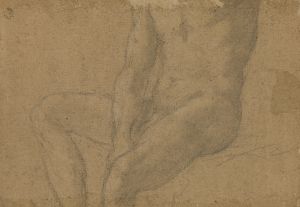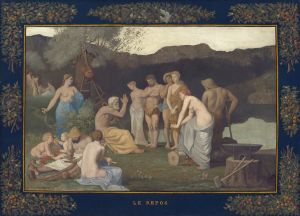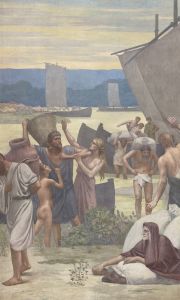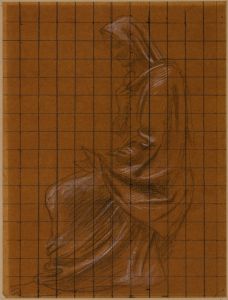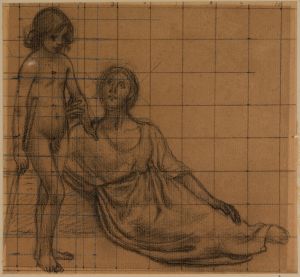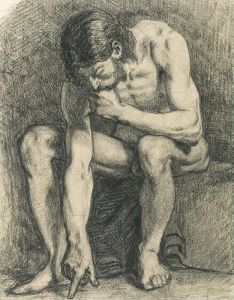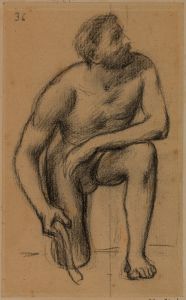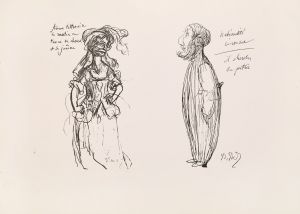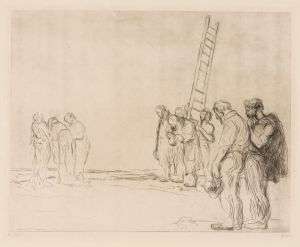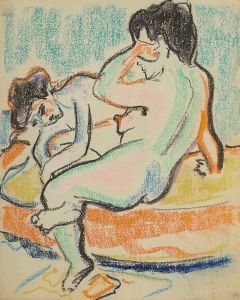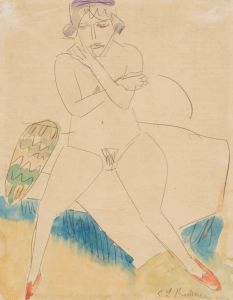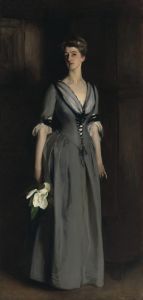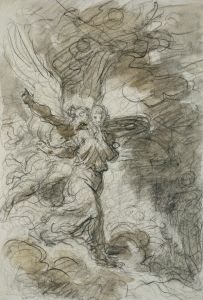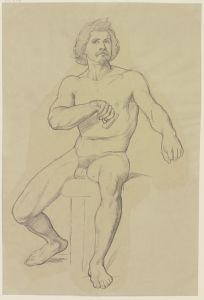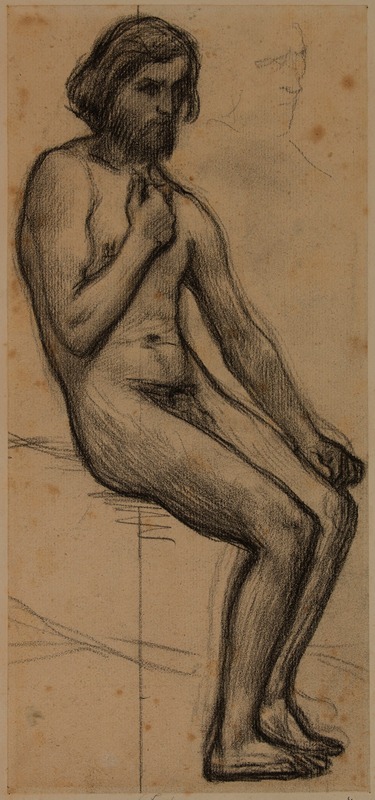
Homme nu assis
A hand-painted replica of Pierre Puvis de Chavannes’s masterpiece Homme nu assis, meticulously crafted by professional artists to capture the true essence of the original. Each piece is created with museum-quality canvas and rare mineral pigments, carefully painted by experienced artists with delicate brushstrokes and rich, layered colors to perfectly recreate the texture of the original artwork. Unlike machine-printed reproductions, this hand-painted version brings the painting to life, infused with the artist’s emotions and skill in every stroke. Whether for personal collection or home decoration, it instantly elevates the artistic atmosphere of any space.
Pierre Puvis de Chavannes was a notable French painter of the 19th century, renowned for his mural paintings and his influence on the Symbolist movement. Among his works is "Homme nu assis," which translates to "Seated Nude Man." This painting exemplifies Puvis de Chavannes' distinctive style, characterized by its subdued color palette and serene composition.
Puvis de Chavannes was born on December 14, 1824, in Lyon, France. He initially pursued a career in engineering before turning to art, studying under several artists, including Eugène Delacroix. However, Puvis developed a unique style that set him apart from his contemporaries. He became known for his large-scale murals, which often depicted allegorical and classical themes, and his work had a significant impact on the development of modern art.
"Homme nu assis" is a work that reflects Puvis de Chavannes' interest in the human form and classical themes. The painting features a nude male figure seated in a contemplative pose. The simplicity of the composition, combined with the muted tones, creates a sense of calm and introspection. This approach is typical of Puvis' work, where the focus is on the overall harmony and mood rather than intricate details or dramatic contrasts.
The painting is an example of Puvis de Chavannes' ability to convey emotion and narrative through minimalism. The figure's pose and expression suggest a moment of reflection or meditation, inviting the viewer to engage with the subject on a deeper level. This introspective quality is a hallmark of Puvis' work, which often explores themes of solitude, contemplation, and the human condition.
Puvis de Chavannes' influence extended beyond his own time, impacting artists such as Paul Gauguin, Georges Seurat, and the Symbolists. His approach to composition and use of color were seen as innovative, and his work was admired for its timeless quality. "Homme nu assis" is a testament to Puvis' skill in creating works that are both aesthetically pleasing and thought-provoking.
The painting is part of a broader body of work that includes both murals and easel paintings. Puvis de Chavannes' murals can be found in various public buildings in France, including the Panthéon in Paris and the Musée des Beaux-Arts in Lyon. His easel paintings, such as "Homme nu assis," are held in collections around the world, appreciated for their beauty and the quiet power they convey.
In summary, "Homme nu assis" by Pierre Puvis de Chavannes is a significant work that exemplifies the artist's unique style and thematic interests. Through its simplicity and elegance, the painting captures the essence of Puvis' artistic vision, making it a valuable piece in the study of 19th-century art. Puvis de Chavannes remains an influential figure in art history, and his works continue to be celebrated for their contribution to the evolution of modern art.





